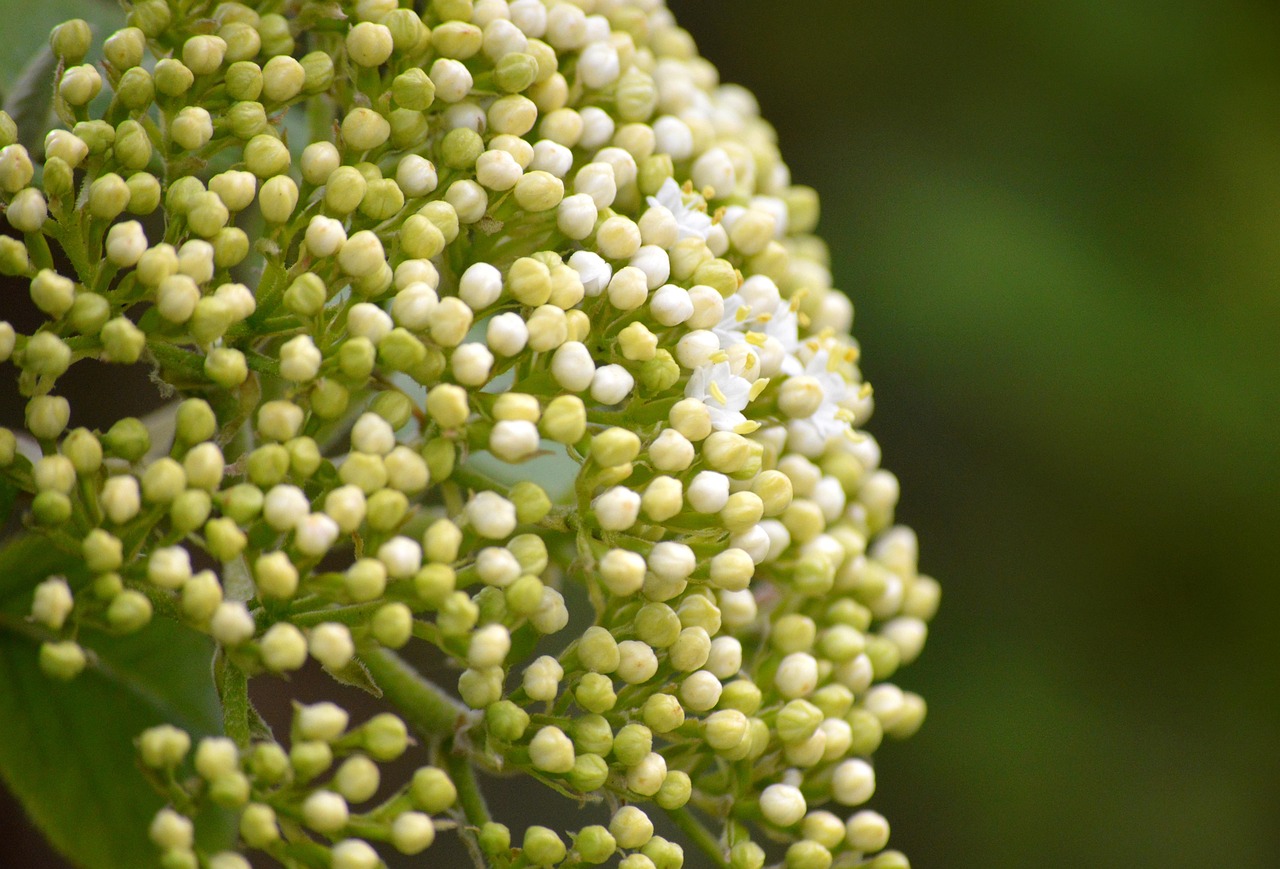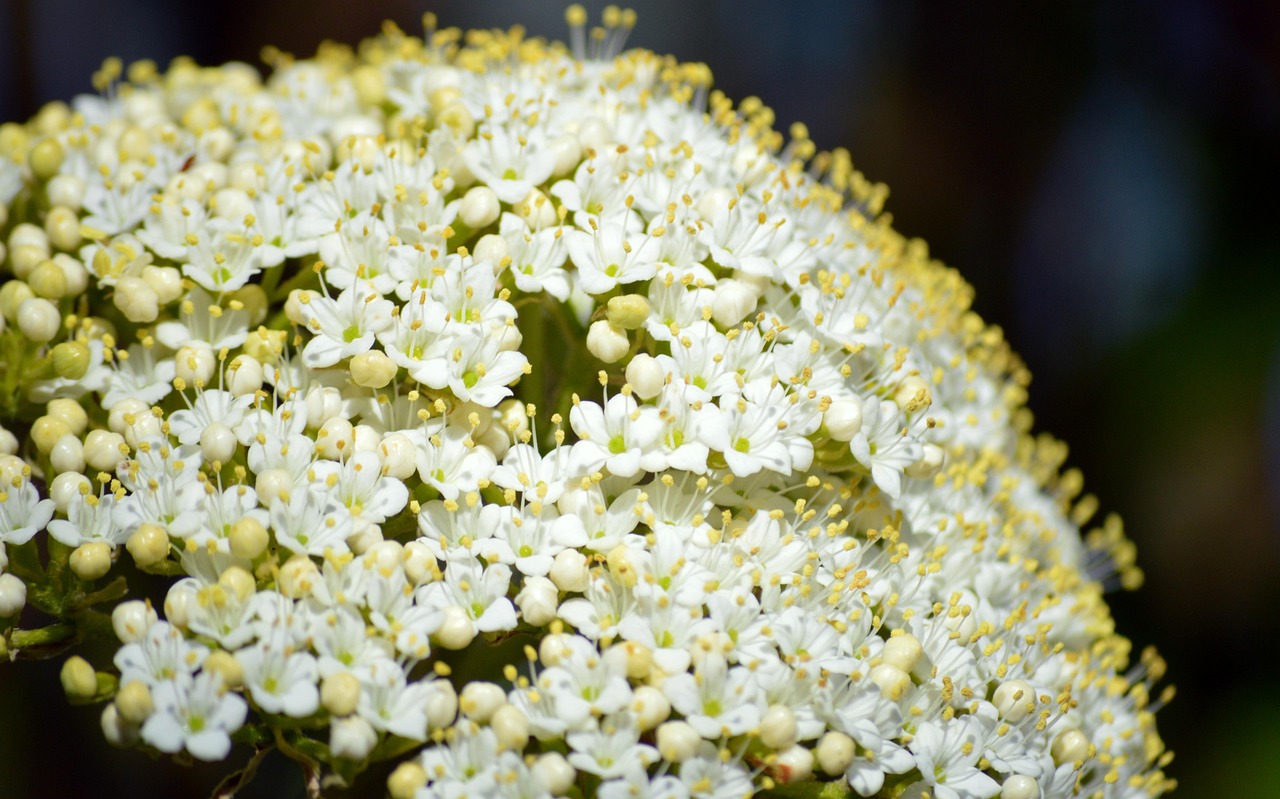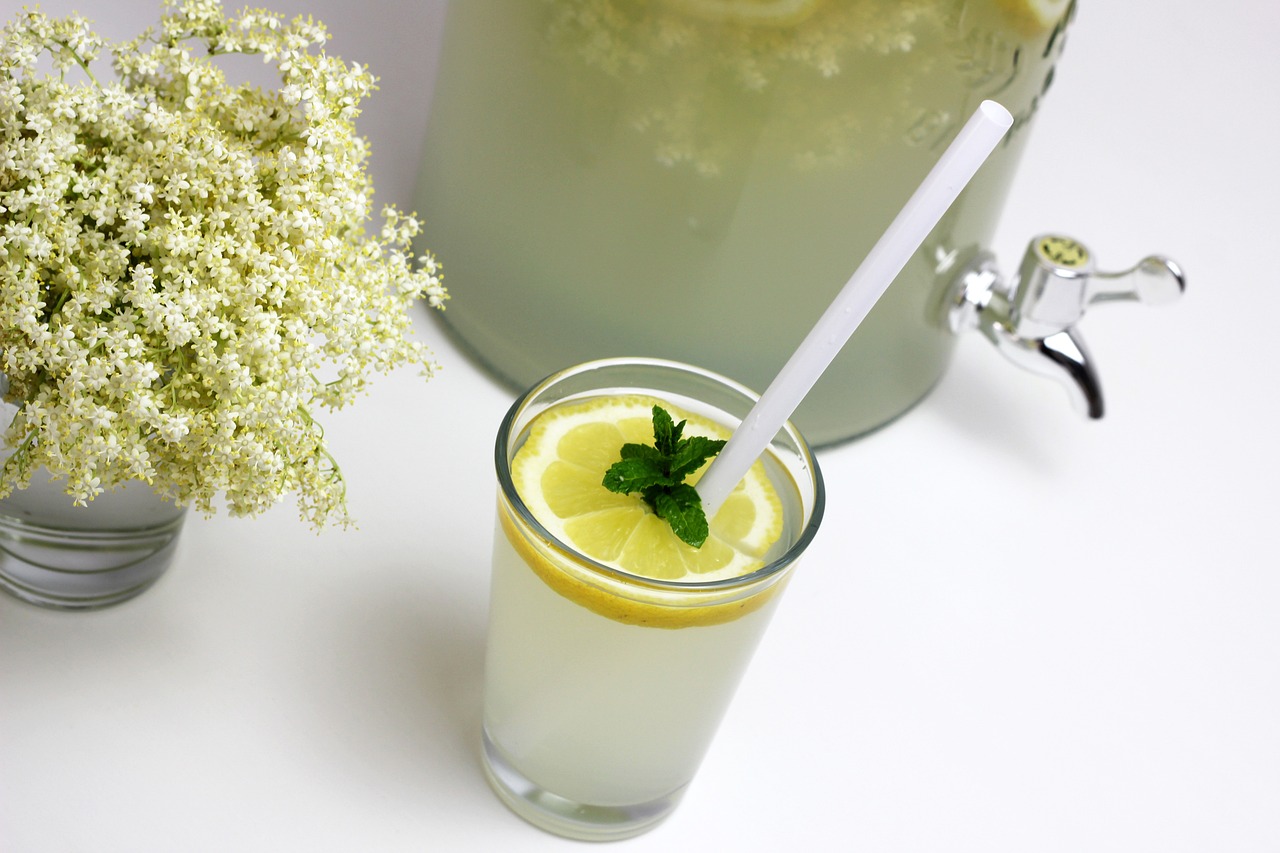Pruning elderberry plants helps enhance their resilience by removing dead or diseased branches, promoting airflow, and encouraging new growth. Proper pruning techniques can lead to healthier plants that produce more fruit and withstand environmental stressors better.
Elderberry plants are valued for their beautiful flowers and nutritious berries. These versatile shrubs thrive in various climates and are often used in landscaping, culinary applications, and herbal medicine. However, like all plants, elderberries require proper care to maximize their health and productivity. One of the most effective maintenance practices is pruning, which significantly impacts plant resilience and overall growth.

When it comes to pruning elderberry plants, timing and technique are crucial. Pruning at the right time encourages vigorous growth and enhances fruit production. Typically, the best time to prune elderberries is during late winter or early spring, just before the new growth begins. This allows you to prepare the plant for a healthy growing season ahead.
Benefits of Pruning Elderberry Plants
Pruning offers several benefits for elderberry plants. Understanding these advantages can help you appreciate the importance of this practice in your gardening routine. Here are some key benefits:
- Improved Air Circulation: Removing crowded branches allows air to flow freely through the plant. This reduces the risk of fungal diseases.
- Increased Sunlight Exposure: Pruning opens up the canopy of the plant, allowing more sunlight to reach lower branches and leaves.
- Enhanced Fruit Production: By focusing energy on fewer branches, the plant can produce larger and more abundant berries.
- Stronger Structure: Pruning helps develop a strong framework for the plant, making it more resilient to wind and heavy fruit loads.
- Removal of Diseased Wood: Cutting away dead or diseased branches prevents the spread of disease throughout the plant.
When considering pruning, it’s essential to know the different types of cuts you can make. Each cut serves a unique purpose and contributes to the health of the elderberry plant. Below are the common types of cuts used in pruning:

Types of Pruning Cuts
- Heading Cuts: These cuts remove part of a branch’s length, encouraging bushier growth and more branching.
- Thinning Cuts: This technique removes entire branches at their point of origin, helping to reduce density without altering the size of the plant.
- Reduction Cuts: These cuts shorten a branch while maintaining its direction and structure. This is useful for keeping plants within bounds.
Understanding these cuts is vital as it allows you to tailor your pruning approach to the specific needs of your elderberry plants. Each type of cut can encourage different growth patterns and health benefits, depending on how you apply them.
Another critical aspect of pruning elderberries is knowing when to perform specific tasks. A well-timed prune can make all the difference in a healthy crop. Here are some key timing considerations:
| Pruning Task | Recommended Timing |
|---|---|
| Winter Pruning | Late Winter (February-March) |
| Summer Pruning | After Flowering (July-August) |
| Light Maintenance Pruning | As Needed Throughout Growing Season |
The timing of your pruning efforts is crucial for achieving the best results. Winter pruning allows you to assess the plant’s structure without foliage obscuring your view. Summer pruning helps manage size and encourages maximum fruit production by removing spent flowers.

As you prepare to prune your elderberry plants, gathering the right tools is essential. Sharp, clean tools will help you make precise cuts while minimizing damage to the plant. Some recommended tools include:
- Pruning Shears: Ideal for small branches and detailed work.
- Loppers: Good for thicker branches that may be too large for shears.
- Saws: Necessary for cutting larger limbs that cannot be handled with shears or loppers.
Regular pruning not only boosts resilience but also enhances the aesthetics of your garden. With each season, as you prune your elderberry plants, you contribute to their long-term health and productivity. The rewards of this practice extend beyond mere aesthetics; they culminate in robust plants that yield abundant fruit year after year.
Understanding the Elderberry Growth Cycle
To effectively prune elderberry plants, it’s crucial to understand their growth cycle. Elderberries typically grow in a seasonal rhythm, with distinct phases that affect how and when you should prune. Familiarizing yourself with these phases can lead to a more successful pruning strategy.

Spring: Awakening and Growth
Spring marks the beginning of the growth cycle for elderberry plants. During this time, buds begin to swell and new shoots emerge. It is essential to monitor the development of these young branches, as they will bear fruit later in the season. Pruning during early spring can help shape the plant and encourage strong growth. Consider focusing on:
- Removing any dead or damaged branches that may have survived winter.
- Thinning out crowded areas to ensure adequate sunlight reaches all parts of the plant.
- Cutting back last year’s growth to encourage new shoots.
Summer: Flowering and Fruit Development
As summer approaches, elderberry plants begin to flower, leading to the development of berries. Proper management during this phase can significantly affect fruit yield. Summer pruning should focus on:
- Deadheading spent flowers to redirect energy towards berry production.
- Removing any new growth that appears weak or spindly.
- Ensuring that the plant maintains an open structure for air circulation.
Fall: Harvesting and Preparing for Dormancy
In the fall, elderberries are ready for harvest. This is a crucial time for final maintenance before winter arrives. After harvesting, consider the following tasks:
- Cut back on overcrowded branches that may hinder next year’s growth.
- Evaluate the overall health of the plant and remove any diseased or weak parts.
Winter: Dormancy and Structural Pruning
During winter, elderberry plants enter a state of dormancy. This is the ideal time for more aggressive structural pruning. Focus on:
- Removing older canes that have produced for several years to stimulate new growth.
- Shaping the plant to maintain a balanced structure.
- Clearing out any remaining dead or diseased wood.
Common Mistakes in Pruning Elderberry Plants
Even with good intentions, mistakes can happen during pruning. Being aware of common errors can help you avoid them and ensure your elderberry plants thrive. Here are some frequent pitfalls:
- Pruning at the Wrong Time: Improper timing can hinder growth and fruit production.
- Over-Pruning: Removing too much wood can stress the plant and reduce yields.
- Ignoring Plant Health: Failing to assess the health of branches can lead to spreading diseases.
- Poor Cutting Techniques: Using dull tools or making improper cuts can damage the plant.
Pruning Techniques for Different Species of Elderberry
Elderberries belong to various species, each with unique growth habits. Understanding these differences can help tailor your pruning approach effectively. Here are two common species:
Sambucus nigra (Black Elderberry)
This species is known for its tall, bushy growth and large clusters of berries. When pruning black elderberries, consider:
- Encouraging a strong central leader by selectively removing competing branches.
- Aiming for an open canopy structure to increase sunlight penetration.
Sambucus canadensis (American Elderberry)
The American elderberry is often shorter and bushier than its European counterpart. For this species, focus on:
- Maintaining a low center of gravity by keeping lower branches intact.
- Thinning out older canes every few years to promote new growth from the base.
Tools and Techniques for Effective Pruning
The right tools can make a significant difference in how well you prune your elderberry plants. Here’s a deeper look at essential tools and techniques:
- Bypass Pruners: Best for clean cuts on smaller branches. These pruners have two blades that slide past each other, creating a clean cut.
- Anvil Pruners: Suitable for tougher branches but may crush stems if not used carefully. Ideal for heavier jobs.
- Pruning Saw: Necessary for larger limbs, this tool allows you to make precise cuts without damaging surrounding tissue.
Apart from tools, employing proper techniques is vital. Always make cuts at a 45-degree angle just above a bud. This encourages healthy growth while minimizing damage to the plant.
Regularly cleaning your tools between uses can prevent the spread of diseases and pests. Wiping blades with rubbing alcohol or a bleach solution is an effective way to sanitize them.
Signs of Healthy Elderberry Plants
A healthy elderberry plant is more likely to respond positively to pruning efforts. Recognizing the signs of health can help you decide which branches to prune and which to keep. Here are some indicators of a thriving elderberry plant:
- Vibrant Leaves: Healthy leaves are typically deep green and free from discoloration or spots.
- Strong Growth: New shoots should be robust and growing vigorously during the spring months.
- Abundant Flowers: A good number of flowers indicates that the plant is healthy and ready to produce fruit.
- Minimal Pests: A lack of pests or signs of disease shows that the plant is resilient and well-maintained.
Recognizing Signs of Stress or Disease
Identifying stress or disease in elderberry plants is just as important as recognizing health signs. When plants exhibit stress, they may not respond well to pruning. Here are some common signs of distress:
- Wilting Leaves: Leaves that droop or wilt can indicate lack of water or root issues.
- Yellowing Leaves: This may suggest nutrient deficiencies or overwatering.
- Stunted Growth: If the plant is not growing as expected, it may be suffering from root problems or disease.
- Bark Damage: Cracks or peeling bark can signal disease or pest infestations.
If you notice any of these issues, it is crucial to address them before proceeding with pruning. Resolving underlying problems will help ensure that your pruning efforts are effective and promote plant resilience.
Pest Management for Elderberry Plants
Protecting your elderberry plants from pests is essential for their long-term health and productivity. Several common pests may affect elderberries, including:
- Aphids: These small insects can cause leaf curling and stunted growth.
- Spider Mites: Often found on the undersides of leaves, they can create webbing and cause leaf discoloration.
- Japanese Beetles: These beetles feed on foliage, leading to defoliation.
Implementing effective pest management strategies can help protect your elderberry plants. Here are some methods to consider:
Cultural Practices
- Proper Spacing: Ensure adequate space between plants to improve air circulation and reduce pest populations.
- Regular Monitoring: Keep an eye on your plants for early signs of infestation so you can address problems promptly.
Natural Pest Control Methods
- Insecticidal Soap: This can be effective against soft-bodied insects like aphids.
- Nematoids: Beneficial nematodes can help control soil-dwelling pests.
- Companion Planting: Planting herbs and flowers that attract beneficial insects can help keep pests at bay.
Understanding Soil Health for Elderberries
The health of the soil plays a critical role in the resilience of elderberry plants. Healthy soil provides nutrients and supports strong root systems, making plants more robust against pests and diseases. Here are some factors to consider regarding soil health:
Nutrient Content
Elderberries thrive in nutrient-rich soil. Conducting a soil test can help determine the nutrient levels and pH balance. Based on the results, you may need to amend the soil with:
- Organic Matter: Adding compost can improve soil structure and increase nutrient availability.
- Nitrogen Fertilizers: If nitrogen levels are low, consider adding a slow-release fertilizer to promote healthy growth.
Soil Drainage
Poor drainage can lead to root rot, a significant threat to elderberry plants. Ensuring that your soil drains well is vital. You can improve drainage by:
- Aerating the Soil: This allows for better water infiltration.
- Adding Sand or Perlite: Mixing these materials into the soil can enhance drainage capabilities.
The Role of Mulching in Plant Resilience
Mulching is another excellent practice that contributes to the overall health of elderberry plants. Applying mulch around your plants offers several benefits, including:
- Weed Suppression: Mulch helps prevent weed growth, reducing competition for nutrients and water.
- Soil Moisture Retention: It keeps the soil moist, which is crucial during hot summer months.
- Temperature Regulation: Mulch acts as an insulating layer, protecting roots from extreme temperatures.
The ideal mulch materials for elderberries include wood chips, straw, or shredded leaves. Apply a layer of about 3 inches around the base of the plant while keeping it away from direct contact with the trunk to avoid rot.
Watering Practices for Resilient Elderberries
Your watering practices significantly affect the health and resilience of elderberry plants. Proper watering techniques promote robust growth and help prevent disease. Consider these guidelines for effective watering:
- Deep Watering: Water deeply but infrequently to encourage deep root development.
- Avoid Overwatering: Ensure that the soil drains well and does not stay soggy for extended periods.
- Timing: Water in the morning to reduce evaporation and allow foliage to dry during the day, minimizing disease risk.
By combining proper pruning techniques with an understanding of plant health, pest management, soil health, mulching, and watering practices, you can significantly enhance the resilience of your elderberry plants. These comprehensive practices will lead to healthier plants that thrive in your garden.
Additional Care Tips for Elderberry Plants
Beyond pruning, watering, and pest management, there are several additional care tips that can help you nurture your elderberry plants effectively. These practices can enhance their overall health and resilience against environmental challenges.
Fertilization
Providing the right nutrients is essential for the vitality of elderberry plants. Fertilization should be based on soil tests to avoid nutrient imbalances. Consider these fertilization practices:
- Organic Fertilizers: Using compost or well-rotted manure can improve soil health while providing essential nutrients.
- Slow-Release Fertilizers: These can be effective in providing a steady supply of nutrients over time. Look for a balanced fertilizer with equal parts nitrogen, phosphorus, and potassium.
- Timing of Application: Apply fertilizers in early spring, just before new growth begins, to provide the necessary nutrients for the growing season.
Pruning for Specific Goals
Pruning can be tailored to meet specific goals depending on your gardening objectives. Here are some targeted pruning strategies:
- For Increased Yield: Focus on removing older, less productive canes to encourage the growth of new ones that will produce more berries.
- For Aesthetic Appeal: Shape the plant into a more visually pleasing form by selectively pruning for symmetry and balance.
- For Disease Management: Regularly inspect and prune any diseased or damaged wood to prevent the spread of pathogens.
Seasonal Monitoring
Seasonal monitoring is vital in maintaining healthy elderberry plants. Observing changes throughout the year can help you catch problems early. Here are some key monitoring practices:
- Spring: Watch for bud swelling and new growth. Assess the plant’s response to winter conditions.
- Summer: Monitor for pests and diseases while ensuring adequate water supply during hot months.
- Fall: Evaluate fruit yield and prepare for winter pruning. Check for any signs of stress or disease.
- Winter: Inspect the structure of the plant and determine which canes to prune based on previous growth.
Common Challenges in Elderberry Cultivation
Cultivating elderberry plants can present certain challenges. Being aware of these potential issues can help you address them proactively:
- Pests and Diseases: As mentioned earlier, common pests like aphids and diseases such as powdery mildew can threaten elderberries. Regular monitoring and timely interventions are crucial.
- Environmental Factors: Extreme weather conditions, including drought or excessive moisture, can affect plant health. Adjust watering practices accordingly to mitigate these effects.
- Nutrient Deficiencies: Leaf discoloration or poor growth may indicate nutrient deficiencies. Conduct soil tests and amend accordingly to restore balance.
Final Thoughts
Caring for elderberry plants through proper pruning, watering, pest management, and additional practices is essential for building resilience. By understanding their growth cycle, recognizing signs of health or distress, and implementing effective strategies, you can create a thriving environment for your elderberries.
The journey of cultivating elderberries is rewarding. Not only do you enjoy the beauty they bring to your garden, but you also reap the benefits of their nutritious berries. Regular care and attention will lead to robust plants that not only withstand challenges but flourish each season.
As you embark on your elderberry pruning journey, remember that patience and observation are key. Each plant is unique, and adapting your methods to suit their specific needs will yield the best results. With consistent care, your elderberries will thrive and provide you with an abundance of joy and nutrition for years to come.
In summary, effective pruning combined with comprehensive care practices ensures that your elderberry plants remain healthy and resilient. By following these guidelines, you set the stage for a bountiful harvest while enhancing the overall beauty of your garden.
